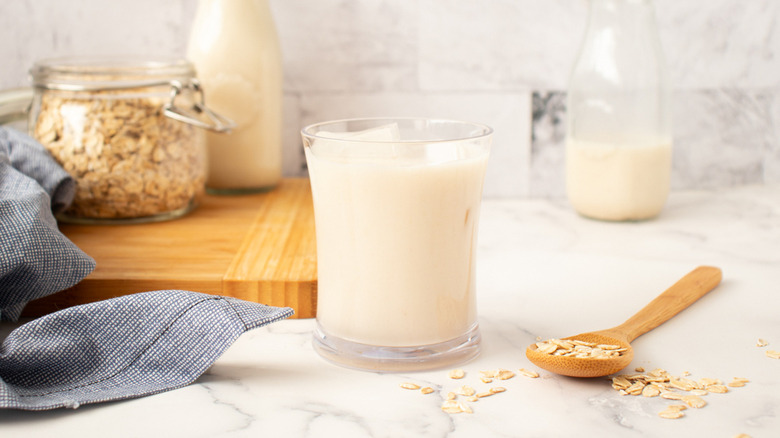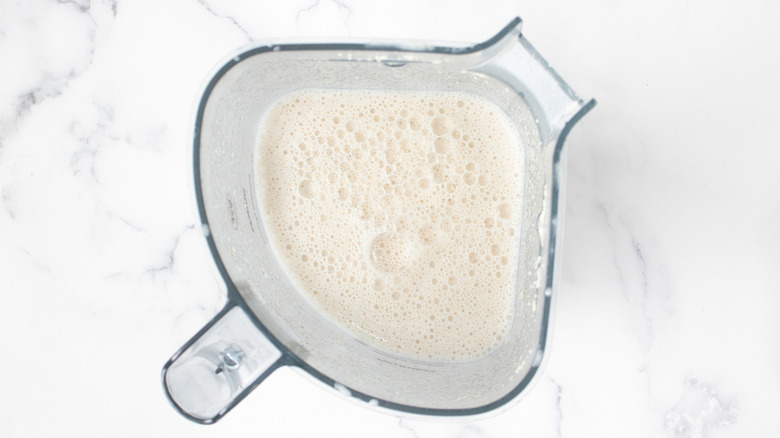Use A High-Speed Blender For Perfectly Textured Homemade Oat Milk
Oat milk is all the rage right now. It's considered one of the most eco-friendly milk alternatives, and because oat milk is creamier than other non-dairy milks, it's also an ideal choice for coffee, cereal, and baking. Popular oat milk brands have done a great job of convincing buyers that oat milk is the superior milk alternative, but everyone knows that store-bought can never beat the taste of homemade. Without a high-speed blender, though, Mashed recipe developer Patterson Watkins says your homemade oat milk may fall short.
While Watkins' homemade oat milk recipe includes ingredients like honey, vanilla extract, and salt for taste, at its core, oat milk is just water and blended oats. Loaded with starches, oats tend to become gelatinous when blended or heated. While this makes oatmeal thick and creamy, it can give oat milk a slimy texture. This is why commercially made oat milk typically contains enzymes that break down those starches. Because her oat milk is made without these enzymes, Watkins says using a high-speed blender is crucial. Not only will it pulverize the oats better than a regular blender, but it will do so quickly — before it starts generating heat.
Blend your oats, but not too much
For oat milk to be rich in taste and creamy in texture, the oats must be finely blended. This process releases more of their nutrients, protein, and fat into the mixture, but excessive blending can also unleash more of the enzymes responsible for gelatinization. Regular blenders also have to work longer and harder than their high-speed counterparts. The longer the motor runs, the more heat it produces, which can transfer to the oat mixture and contribute to a slimy texture.
With sharper blades and a more powerful motor, Patterson Watkins says a high-speed blender can successfully grind oats in as little as 30 seconds. Depending on the quality of your blender, however, you may be able to get away with blending your oat milk for just 10 seconds at high speed. Once you've perfectly pulverized your oats, Watkins says to strain the slurry through a cheesecloth or fine mesh sieve. Just be careful not to over-manipulate the oat pulp, as squeezing it can cause gelatinization, too.
When stored in the fridge, homemade oat milk can remain fresh for up to five days. That said, applying heat can still trigger the slimy reaction, so oat milk made without added enzymes is best used cold (think iced coffee, cereal, and smoothies) or for baking.

